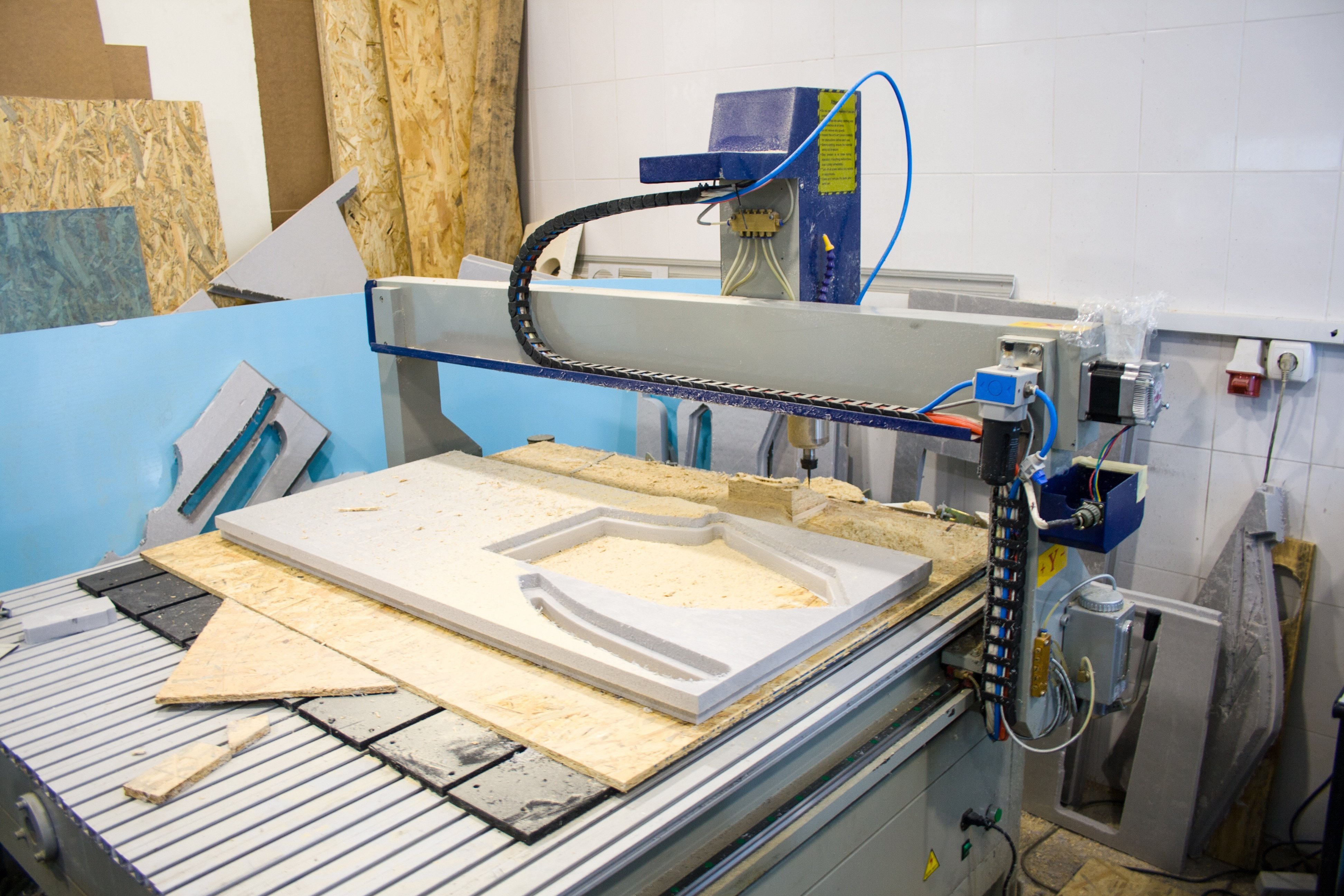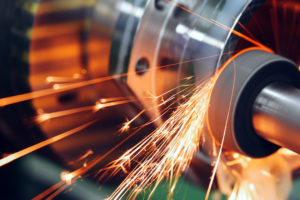A computer numerical control router (CNC) is a cutting device in the same genre as a hand-held router. Both are useful for cutting aluminum, plastics, steel, composites, foams, and wood. The CNC router can do the same tasks as a panel saw, a boring machine, and a spindle molder. It can also cut mortises and tenons. This tool uses bits that make “routing” job results straightforward, superior, and more productive.
Choosing the correct bit for the job from the broad range of bits available on the market is crucial. Fortunately, having an understanding of the bits’ various uses will make finding the exact bit you need a simple and straightforward process.

The Up-Cut Router Bit
Up-cut router bits, used on a multitude of materials, receive high scores from those who use them. Most view them as excellent general-purpose tools. The bits are durable, well manufactured, and low in cost.
They come in the following styles:
- The “single flute up-cut spiral” is helpful for profile pocketing and cutting woods, plastics, and foams. This bit comes in length-sizes from 30mm to 4″.
- When using the “upward spiral bit,” waste (minute chips of stone, metal, and other materials produced by machining operations) that collects around the bit during use is easy to remove.
- Because the spiral flute has a tendency to lift the material, you will need a reliable stabilizing system to stop movement and vibration when cutting thin sheets. Otherwise, the cut quality may worsen.
Other types of up-cut bits include:
- Up-cut router bits for aluminum
- Cristal single flute upward spiral bits are for a smooth, consistent finish on materials such as high-pressure laminates, plastics, aluminum, and non-ferrous metals (50mm to 60mm lengths)
The Diamond PCD Composite Finishing Tool
The “Diamond PCD composite finishing tool” uses polycrystalline diamond, one of the world’s hardest substances, for cutting composites, plastics, fiberglass, and some non-ferrous metals. When cutting is arduous, it’s wise to make use of the PCD composite bit. The bit is 2″ in length with durable wear span and outstanding strength. This is one of the most expensive CNC bits, but its durability warrants the price tag. The diamond particles used on the Diamond PCD coalesce (or sinter) with a metallic binder through high temperature and pressure. The resulting carbide substrate is resistant to wear and delivers an improved edge finish. The Diamond PCD can also cut for extended periods of time.
Down-Cut Bits
CNC bits that have a “down-cut” design push the material down during cutting. This is an asset when cutting thin materials. Down-cuts hold the material in place, making it less likely to vibrate or move.
Examples of down-cut bits include:
- Down-cut router bits for thin sheets of material with a top surface that is prone to chip (1 1/2″ in length to 60 mm)
- Down-cut bits for aluminum and other non-ferrous metals
- Double edged down-cut bits used especially with laminated materials or thin, flexible sheets
- Triple edged down-cut bits which are stronger and produce a more delicate finish
Specialized Router Bits
The beauty of the CNC router is its versatility, based on the type of bit you use.
Some of the unique bits that are part of the CNC router’s repertoire include:
The Bottom Surfacing Bit – Used on plastic and aluminum, this solid carbide, twin fluted, straight surfacing bit allows for pocketing that requires a smooth pocketing surface.
Diamond-Shaped Fluted Bits – These bits route fiberglass. The up-cut/down-cut diamond design creates a grinding motion and shears fibrous materials. Other bits like this one can also cut aramid fiber composites (heat-resistant, strong synthetic fibers).
Compression Bits – When a user needs high feed-rates and clean finishes, solid carbide compression spiral bits are the right choice. These bits are suitable for double-sided melamine or laminated material. The single flute bit provides the highest feed rate and long-term durability, as well.
Mortising Bits – With its 1/4″ up-cut, or less, this compression spiral bit creates mortise cuts on thin wood materials. The up-cut prevents fuzzing and chipping on the top and bottom of the materials used. Other bits used for joining two pieces of substance together or for decorating a material (usually wood) include:
- Specials End Bits for making chamfers
- Keyhole and T-Slot Bits for making corners on drawer fronts, plaques, and frames
- V Bits for chamfering, grooving, and 3D carving
- Flat Table Dovetail Drawer System for making drawers
- Insert Shaker Door Cutters
Straight Bits – For routing firm and rigid materials, such as phenolic, acrylic, foam, fiberglass, and other solid surfaces, these bits are the best choice. They do the job on wood, MDF, and plastics, soft to hard.
Round Over Bits – For decorative profile cutting with smooth finishes, this bit will be necessary. It is also used for trimming and lettering wood.
Surface Planing Bits – These bits come with inserts that allow for designing and surfacing particleboard, MDF, and balsa. Using it makes for faster table planing.
Straight Twin Fluted Cutters – This type of bit cuts softwoods, hardwoods, and MDF. They route clean edges without leaving rough burrs on the top surface. They also cut foam.
3D Ball Nose Bits – 3D machining and cutting most woods, non-ferrous metals, and plastics are what these tools do best. Geared toward sizeable 3D machining jobs like molds, rapid prototyping, and models, these bits are the superstars of the CNC router world.
There are many more types of bits, some of which may be unnecessary for the jobs within your scope of production. Nonetheless, it’s nice to know that the manufacturing of new, perfected, and better quality CNC bits continues, ensuring that every kind of routing task imaginable has a bit to fulfill the needs of designers and makers. It is an excellent idea to speak with the manufacturers of CNC router bits to get the most reliable and current information available about the types of bits they sell.
Although a CNC router is expensive, there are numerous reasons to consider adding one to your business toolbox. Operating costs will go down due to faster job completion, increased quality of performance, and fewer cutting mistakes. Working with a CNC router will produce materials that are smoother, sharper, and more elegant than those that are handmade. Material waste will decrease, and accuracy will increase. It may be time to consider a CNC router.




